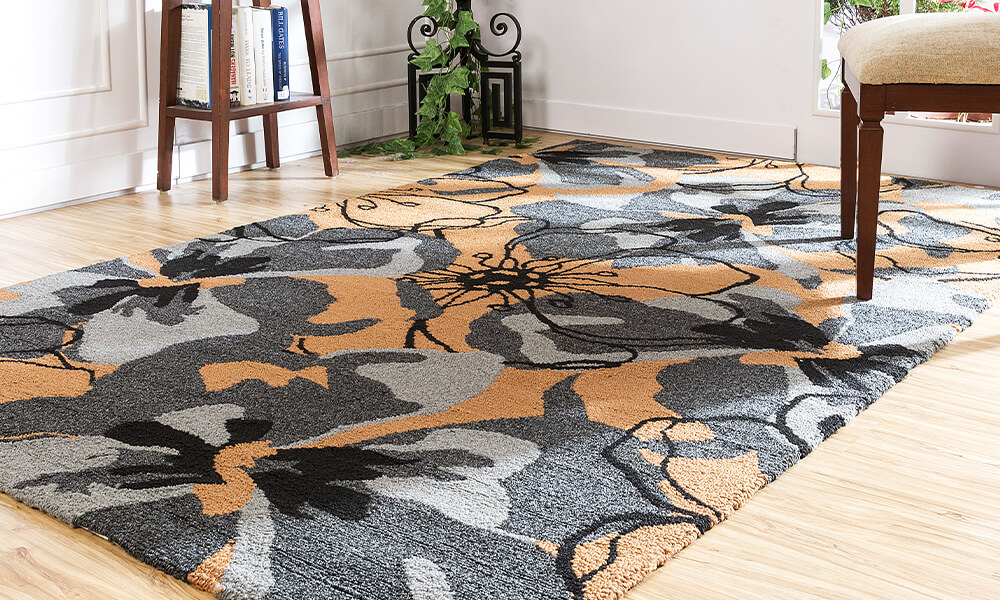There’s a reason why hand knotted rugs are wildly popular in the home décor industry, and it’s because they offer unparalleled durability, craftsmanship and timeless beauty—even as compared to the rest of the entire rug world.
Authentic hand knotted rugs are always made by expert artisans from all over the world, so there’s really no comparing them to machine-made rugs that are mass-produced in factories.
But here’s the tough truth about shopping for rugs abroad: you’re going to come across knockoffs. And as much as no one likes to admit it, the same goes for shopping online as well…
This is why we recently reached out to the hand-knotted rug experts at Rug Source to help us figure out the key signs that a rug for sale is actually the real deal. So, check out the below sections to help you confidently identify authentic hand knotted rugs during your next shopping spree!
Carefully Examine The Back Of Hand Knotted Rugs
Although you can only attempt this tip in-person, it’s always a good idea to carefully examine the back side of a hand knotted area rug by flipping it over.
What you’ll want to see is a mirror reflection on the back as the rug appears on the front, although this side will of course be less defined. You’ll also want to keep an eye out for individual rows and knots, and seeing any backing fabric or mesh is a serious red flag.
You also shouldn’t be seeing any latex or glued layers on a rug’s back side, because everything is supposed to be intricately a part of the weave.
Double-Checking The Rug’s Fringe
The fringes on hand knotted area rugs are never glued or sewn on, because they’re supposed to be an actual extension of the rug’s basic foundation.
This essentially means that every thread will run through the entire rug, so they’ll be visibly tied off around the fringe areas.
If you ever see a rug fringe that appears to be glued on or stitched separately, then you’re simply looking at an imitation—and not at an authentic hand knotted rug.
Feeling The Area Rug’s Thickness & Texture
It’s also common for hand knotted rugs to feature subtly uneven textures, and this is largely due to the simple fact that they’re made by hand and will naturally have some imperfections in comparison to their machine-made counterparts.
Some clues to look for when examining a rug’s texture include:
- Hand knotted rugs often feel heavier and denser, and this is due to natural materials and tight knotting
- Slight irregularities in knot placement and weaving are encouraging signs
- A hand knotted rug should feel firm yet soft, and not spongy like glued or tufted rugs
When an area rug feels perfectly uniform or stiff, it’s likely been made by a machine!
Verify The Rug’s Knot Count (KPSI)
Knot count, also referred to as knots per square inch (KPSI), is a vital metric while shopping for area rugs. This is because KPSI helps shoppers better understand the overall density, design clarity and quality of hand knotted rugs.
You can physically count a rug’s knots by measuring out an inch and simply counting the horizontal and vertical knots—and then multiplying them together.
High-quality rugs will have KPSI ratings of around 200-300+, but it’s important to remember that you can still find great handmade rugs that have a KPSI lower than 200.
And although knot count isn’t an end-all-be-all factor when rug shopping, it’s definitely very reliable when you combine this tip with the others on the list!
Keep The Rug’s Seller & Origin In Mind
All of the most genuine hand knotted rugs come from historic rug making regions, including:
- Turkey
- Iran
- India
- Pakistan
- Afghanistan
- Nepal
You can also often ask sellers for a certificate of authenticity or an appraisal document that details the rug’s age, origin, materials, knot count and estimated value. These types of certificates and documents are particularly important when you’re searching for antique rugs!
Authenticity Matters When Shopping For High-Quality Area Rugs
There are many essential factors that go into rug shopping, but authenticity can’t be overstated when you’re on the hunt for true hand knotted rugs.
Hand knotted rugs are known for lasting generations, which means they’re a long-term investment that you’ll want to get right the first time.
But the good news is that when you follow the above tips and are extra diligent about who you purchase rugs from, you’ll put yourself in a great position to reap the décor benefits of an incredible, one-of-a-kind flooring piece!

